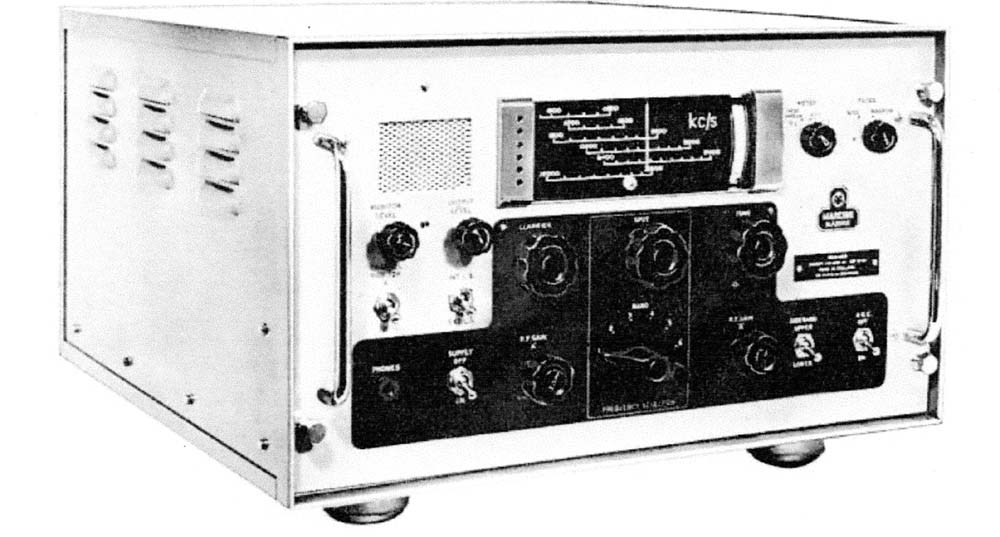 |
| Talisman receiver (Image courtesy Marconi Mariner magazine) |
Contributors and Credits:
1) Ross Bradshaw [ross.bradshaw@mypostoffice.co.uk]
TYPE: Diversity receiver which has been specially designed for the reception of high speed data transmissions.
MODES: This receiver is designed primarily to receive F1 (Frequency Shift Keyig) and F2 (Audio frequency shift keying) modes. . Has SSB or DSB capability.
FREQUENCY RANGE: Marine bands in the range of 4 to 22 MHz Eight crystal controlled spot frequencies are available within these bands.DESCRIPTION:
At the beginning (year?) the technical division of Marconi Marine, working in close collaboration with Shell International Marine. Ltd. and the General Post Office, developed a system to provide Shell Centre. London. with immediate data of day-to-day emgine and other performance figures for their tankers.
Initial trials of the system, which were given the name 'Editor', were carried out with the Shell tanker Solen and Shell Centrevia the G.P.O. receiving station Bearley Warwichshire and although these trials were extremely promising, it was found that vastly superior arrangements were necessary at the receiving end.
For a second series of trial transmissions from the Shell tanker Screniu., the General Post Office employed diversity reception which is a system to reduce the effects of signal fading. Two or more aerials, each connected to its own receiver, were spaced several wavelengths apart from one another and the demodulated outputs of the receivers were then combined. During these trials, the audio output of one path of the radio receiver was shifted by 170 Hz and then combined with the output of a second receiver. The resulting tones at 1105 and 1275 Hz for one transmit condition and at 1445 and 1615 Hz for the other were fed simultaneously into the lanoline to the Shell Centre. The results produced were a marked improvement to those of the first trial.
For a third series of trials, a Marconi Marine 'Crusader' single sideband transmitter was used on board the vessel Serenia to transmit the data. Diversity reception was once again used at the receiving station. The rcsult of this trial showed that this was the most efficient method of sending information from and to ships at sea is by means or the single sideband method of radio communication employing tone modulation and diversity reception.
Talisman receiver (Image courtesy Marconi Mariner magazine)
Contributors and Credits:1) Ross Bradshaw [ross.bradshaw@mypostoffice.co.uk]
Apr 3/20